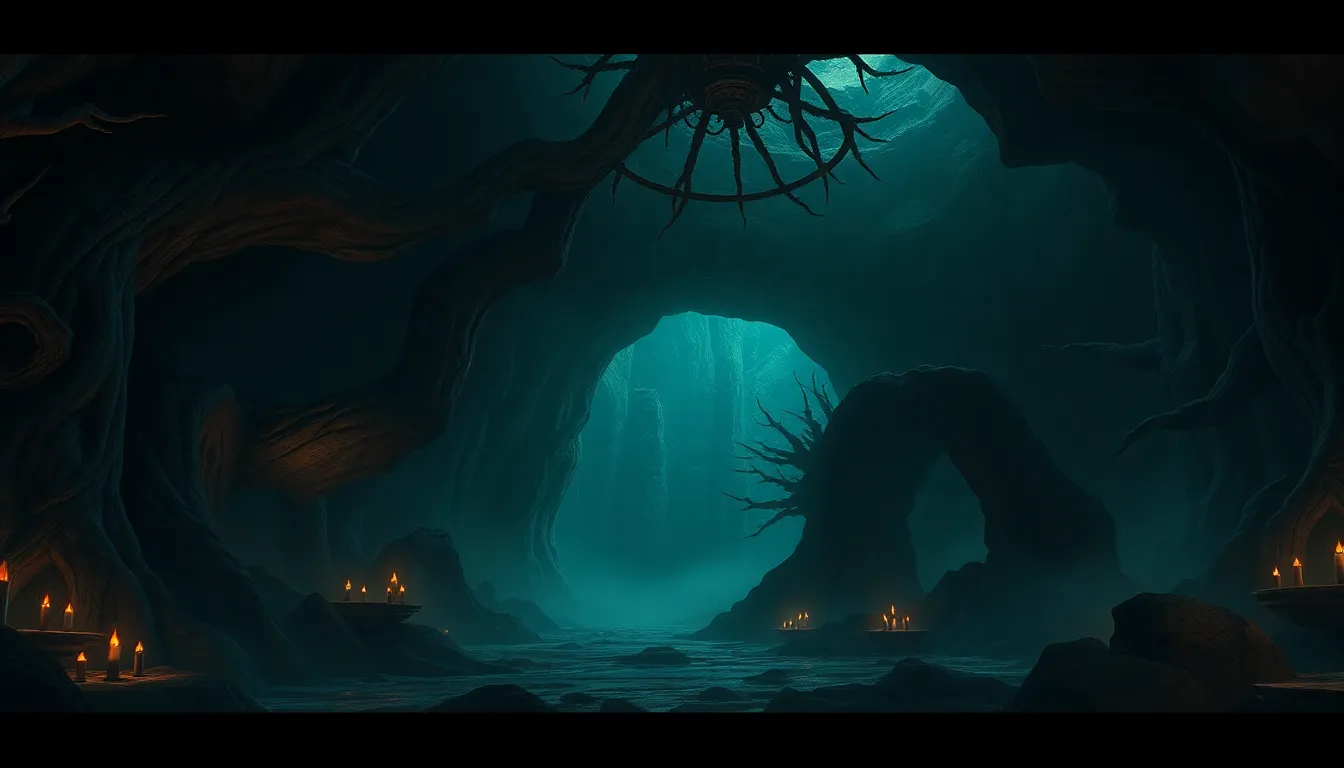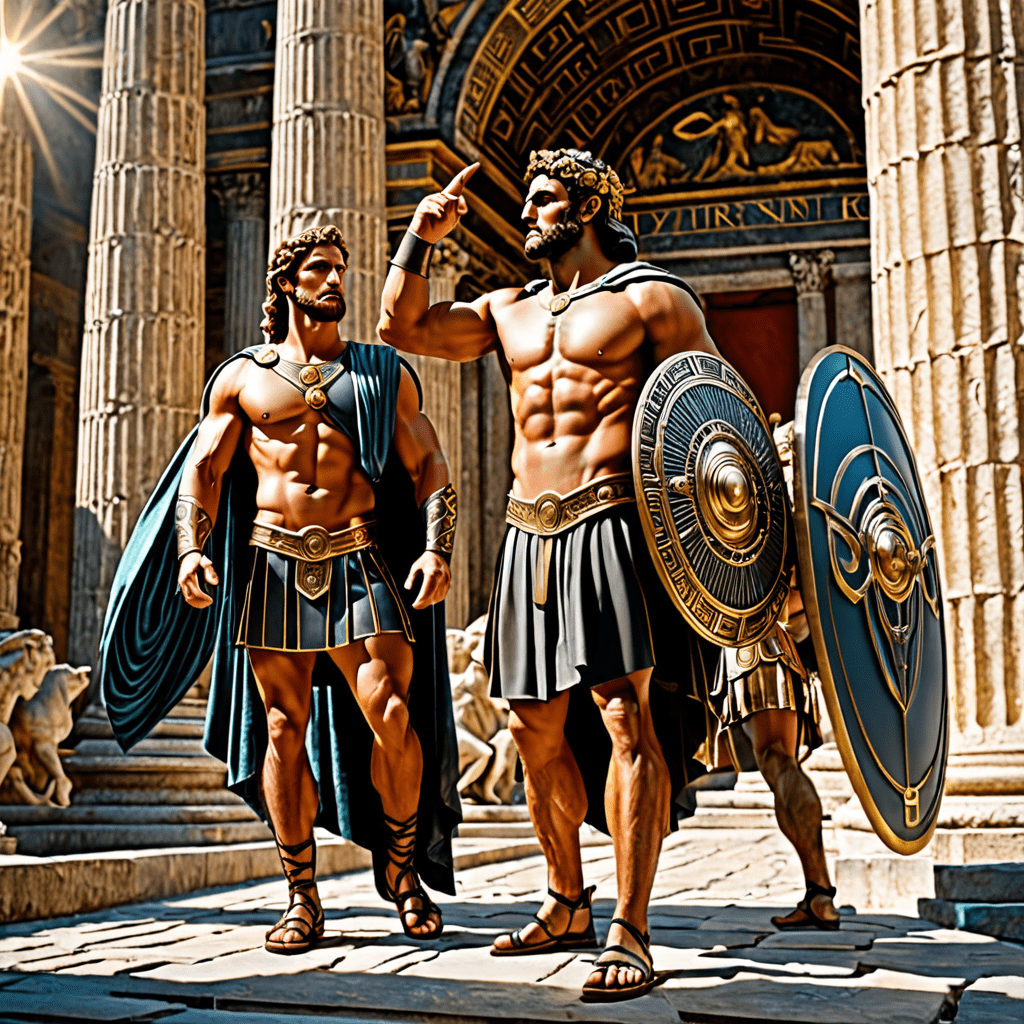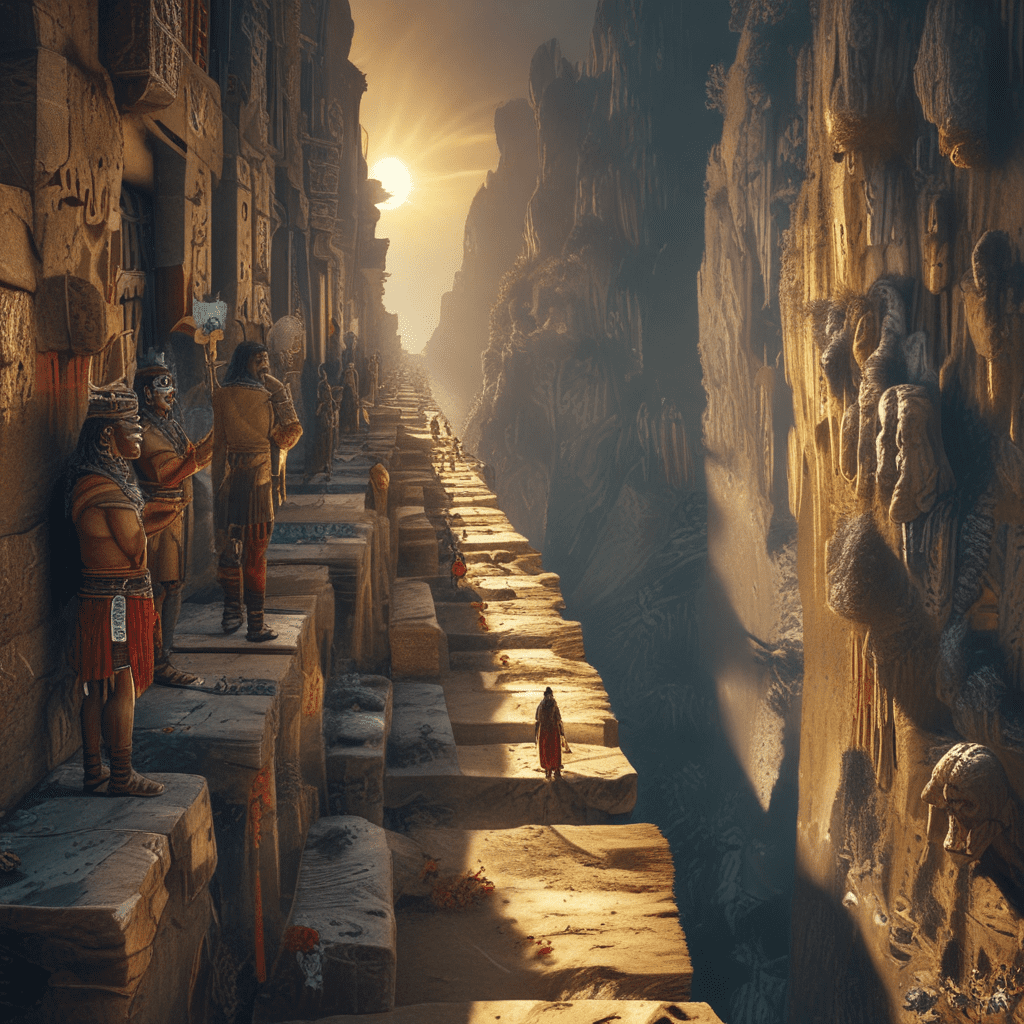The Underworld: A Mythical Realm of Secrets and Shadows
1. Introduction to the Underworld
The Underworld, often depicted as a shadowy realm beneath the earth, has fascinated humanity for centuries. It serves as a critical component in various mythologies, symbolizing the afterlife and the unknown. In many cultures, the Underworld is not merely a place of punishment but a complex domain where souls transition after death, revealing profound themes of secrets and shadows that resonate with our deepest fears and hopes.
2. Historical Context of the Underworld
Throughout history, ancient civilizations have crafted their interpretations of the Underworld, reflecting their beliefs about life, death, and the afterlife. Here are some notable examples:
- Mesopotamian Mythology: The Underworld, known as Kur, was viewed as a dark, dreary place where souls went after death, ruled by the goddess Ereshkigal.
- Egyptian Mythology: The Duat was a complex realm featuring both paradise and peril, where the soul would be judged by Osiris.
- Greek Mythology: Hades ruled the Underworld, which included both Elysium for the virtuous and Tartarus for the wicked.
As cultures evolved, so too did concepts of the Underworld, adapting to changing beliefs and societal norms.
3. The Role of Deities in the Underworld
Deities associated with the Underworld often embody its complexities, from judgment to guardianship. Key figures include:
- Hades: The Greek god who oversees the Underworld, often misunderstood as a symbol of death rather than a figure of justice.
- Osiris: The Egyptian god of the afterlife, representing resurrection and the cycle of life and death.
- Yama: In Hindu mythology, Yama is the god of death who guides souls to their next life and oversees the judgment of their deeds.
These deities reflect the values of their cultures, illustrating the importance of moral conduct and the inevitability of death.
4. The Structure and Geography of the Underworld
The Underworld is often depicted with a complex geography that signifies different realms for souls based on their lives. Notable descriptions include:
- Elysium: A place of bliss in Greek mythology for heroes and the virtuous.
- Tartarus: A deep abyss for the wicked, serving as a prison for Titans and the damned.
- Duat: The Egyptian Underworld, a landscape filled with challenges and trials, leading to the judgment of souls.
This geographical symbolism often reflects the duality of existence—reward and punishment, light and dark—echoing the moral narratives prevalent in their respective cultures.
5. The Journey to the Underworld
The journey to the Underworld is a recurring theme in many myths, often depicted as a perilous passage. Various cultures have detailed the soul’s journey after death, emphasizing the importance of rituals and practices:
- In ancient Egypt, elaborate burial rites ensured the safe passage of the deceased into the Duat.
- Greek mythology often described the crossing of the River Styx, ferried by Charon, as essential for entering Hades.
- In Hindu beliefs, the soul undergoes a journey through different realms before reincarnation, guided by Yama.
These practices underline the significance of honoring the dead and preparing for the inevitable journey to the afterlife.
6. The Concept of Judgment in the Underworld
Judgment after death is a central theme in many Underworld mythologies, reflecting cultural beliefs about morality and the afterlife. Different cultures approach judgment in unique ways:
- In Egyptian mythology, the heart of the deceased is weighed against the feather of Ma’at, symbolizing truth and justice.
- In Christian beliefs, souls face the Last Judgment, determining eternal fate in heaven or hell.
- In ancient Greek tales, the judgment of souls was conducted by three judges: Minos, Rhadamanthus, and Aeacus.
These narratives provide insight into the moral frameworks of various societies and their views on justice and the consequences of one’s actions.
7. The Underworld in Literature and Art
The Underworld has significantly influenced classical literature and art, serving as a backdrop for profound philosophical and moral inquiries. Noteworthy examples include:
- “The Divine Comedy” by Dante Alighieri: A seminal work exploring the afterlife, featuring detailed depictions of Hell, Purgatory, and Paradise.
- “The Epic of Gilgamesh”: An ancient text that includes themes of mortality and the quest for eternal life, with references to the Underworld.
In visual arts, the Underworld has been represented in various forms, from classical paintings to modern films, reflecting society’s enduring fascination with life, death, and the unknown.
8. Modern Interpretations and Cultural Influences
In contemporary culture, the Underworld continues to be a rich source of inspiration, particularly in fantasy and horror literature. Modern interpretations often blend traditional elements with new narratives:
- Fantasy genres depict the Underworld as a realm inhabited by various supernatural beings, often engaging in epic battles.
- Horror literature explores the Underworld as a place of fear and the unknown, emphasizing psychological terror.
These modern representations reflect ongoing societal questions about death and the afterlife, demonstrating that the Underworld remains relevant in today’s culture.
9. Psychological and Philosophical Implications
The Underworld often serves as a metaphor for inner struggles and the human psyche. Philosophers and psychologists have drawn parallels between the Underworld and the concepts of:
- Inner Conflict: The Underworld symbolizes the darker aspects of human nature that must be faced and understood.
- Mortality: Reflecting on the Underworld prompts contemplation on life, death, and the legacy we leave behind.
These interpretations encourage deeper understanding of ourselves and our place in the universe, providing a framework for examining existential questions.
10. Conclusion: The Enduring Legacy of the Underworld
The Underworld maintains a profound significance across cultures, representing the mysteries of life and death. Its themes of secrets and shadows resonate deeply with our collective consciousness, influencing literature, art, and modern beliefs. As we continue to explore the Underworld in various forms, we gain insights into our fears, hopes, and the human experience itself. The legacy of the Underworld serves as a reminder of the delicate balance between light and dark, life and death, and the eternal quest for understanding what lies beyond.




